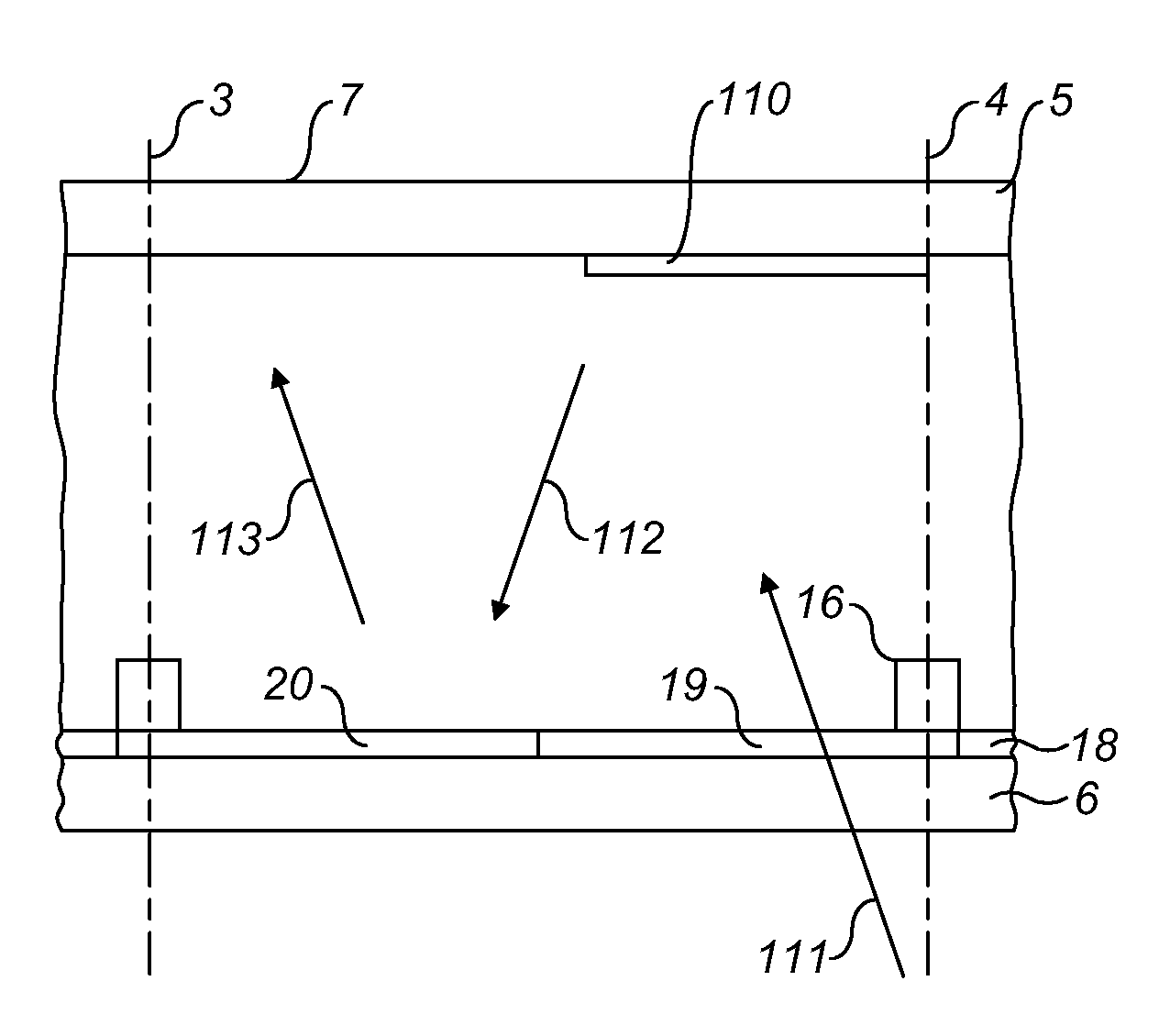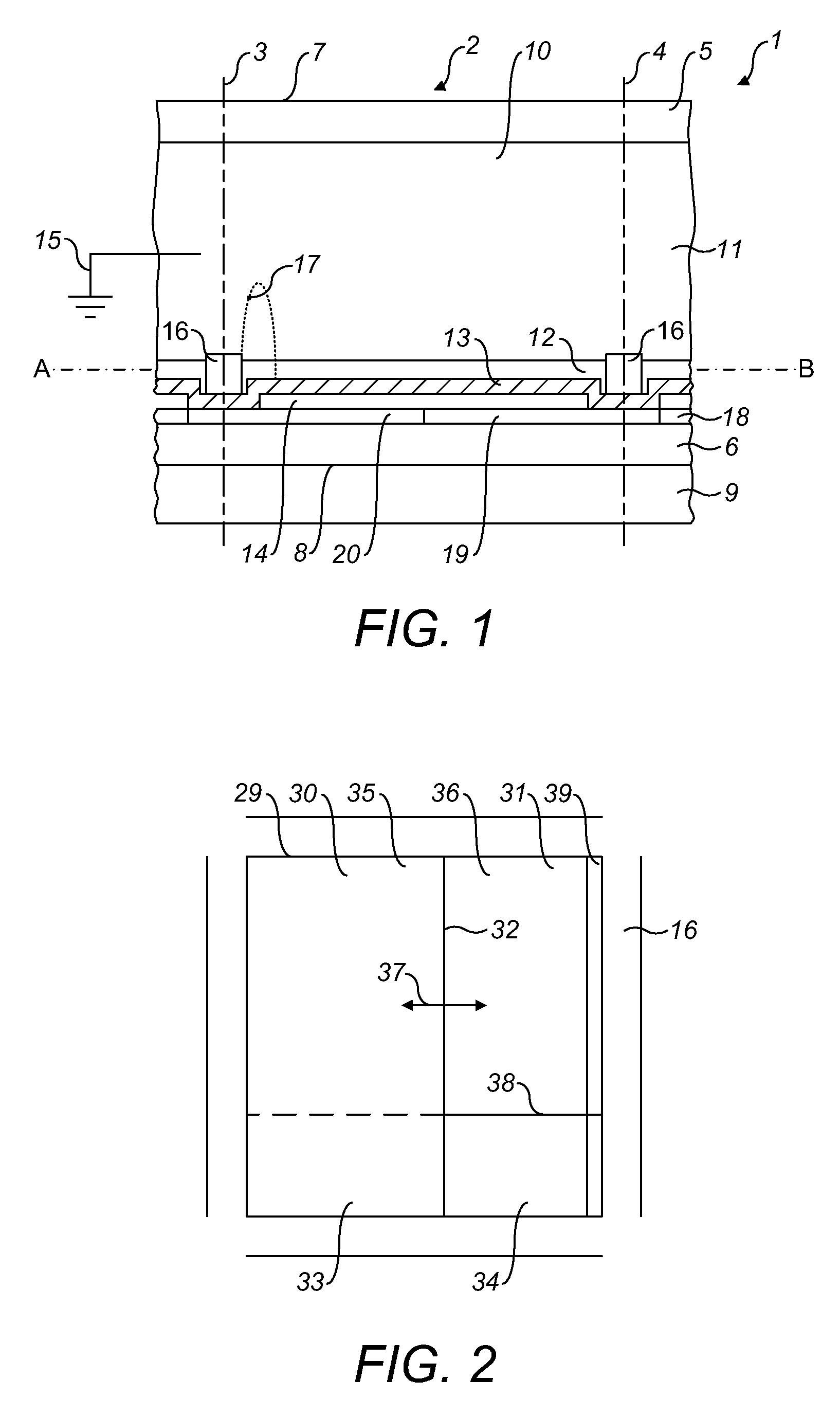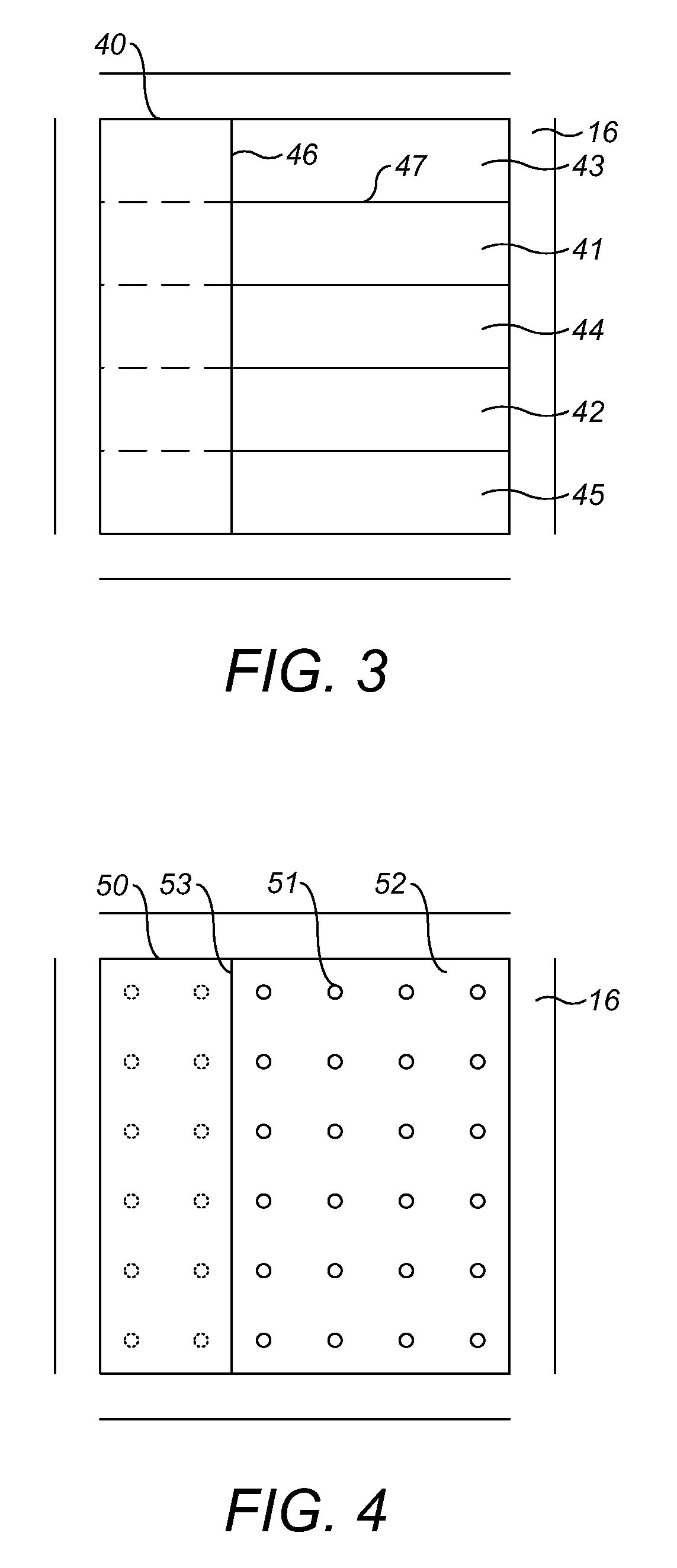Transflective electrowetting display device
a technology of electrowetting display and transparent coating, which is applied in the direction of display means, identification means, instruments, etc., can solve the problems of high manufacturing cost and very yield sensitive steps, and achieve the effect of improving the predictability of the motion of the second fluid and improving the uniformity of grey levels
- Summary
- Abstract
- Description
- Claims
- Application Information
AI Technical Summary
Benefits of technology
Problems solved by technology
Method used
Image
Examples
first embodiment
[0041]FIG. 2 shows a cross-section 29 of the space 1 of the electrowetting element 2 along the line A-B in FIG. 1 as seen from the viewing side. The second liquid covers a predetermined area 30 of the cross-section. A borderline between the predetermined area 30 and the area 31 of the cross-section not covered by the second liquid is indicated by numeral 32. The transparent area of the structured reflector is now divided in an area 33 covered by the second liquid and an area 34 not covered by the second liquid. Similarly, the reflective area of the structured reflector is divided in an area 35 covered by the second liquid and an area 36 not covered by the second liquid. The control of the position of the second liquid can move the borderline 32 in a direction 37. Although the Figures show the borderline 32 as a straight line, it may also be a curved line. The curvature is preferably mirror symmetric around the direction of motion. In the position shown in the Figure, the area 30 cov...
second embodiment
[0043]FIG. 3 shows a cross-section 40 of the electrowetting element as seen from the viewing side. The structured reflector comprises a plurality of transparent and reflective areas: two transparent areas 41, 42 and three reflective areas 43, 44, 45. In the state of the electrowetting element shown, the second liquid covers the area of the cross-section to the left of the borderline 46. Similar to FIG. 2, the parts of the dividing lines between the transparent areas and the reflective areas that are covered by the second liquid are shown as dashed lines. When the borderline moves in a direction parallel to the dividing line 47 between the reflective area 43 and the transparent area 41, the proportions of the transparent areas and the reflective areas covered by the second liquid remain substantially equal.
third embodiment
[0044]FIG. 4 shows a cross-section 50 of the electrowetting element as seen from the viewing side. The structured reflector comprises a plurality of transparent areas 51, each of which is enclosed by a reflective area 52. The transparent areas may be arranged in the form of a regular array as shown in the Figure. Alternatively, the transparent areas may be arranged randomly within the cross-section. The part of the cross-section on the left of borderline 53 is covered by the second liquid. The number of transparent areas in the cross-section may be chosen in dependence on the desired behaviour of the grey level as a function of the position of the borderline 53. When the number of transparent areas becomes larger, the dependence of the grey level on the position of the borderline will better approximate a linear function. In this embodiment the proportions of transparent areas and reflective area covered by the second liquid is substantially independent of the direction of motion of...
PUM
 Login to View More
Login to View More Abstract
Description
Claims
Application Information
 Login to View More
Login to View More - R&D
- Intellectual Property
- Life Sciences
- Materials
- Tech Scout
- Unparalleled Data Quality
- Higher Quality Content
- 60% Fewer Hallucinations
Browse by: Latest US Patents, China's latest patents, Technical Efficacy Thesaurus, Application Domain, Technology Topic, Popular Technical Reports.
© 2025 PatSnap. All rights reserved.Legal|Privacy policy|Modern Slavery Act Transparency Statement|Sitemap|About US| Contact US: help@patsnap.com



